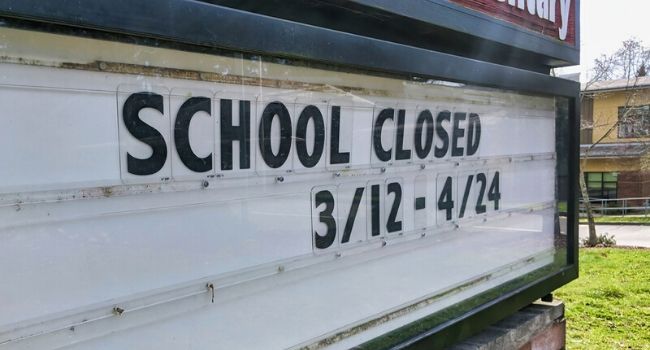
Will School Closures Help Prevent Spread of Coronavirus? CDC Guidelines Say It’s Unlikely
Education officials say they are confused by competing guidance coming from the CDC and The White House, some of which states that temporary school closures will do little to contain the spread of COVID-19.
- By Haley Samsel
- March 19, 2020
Before the Centers for Disease Control and Prevention could release their updated guidelines on school closures last week, more than 30 states across the country had already made their decision to close schools for at least the next few weeks.
Government officials’ reasoning for closing was that sending students, faculty and staff to school would only lead to further “community spread” of the coronavirus, which has infected at least 8,000 people already in the U.S., according to CNN.
But the CDC’s guidelines, which were updated last Thursday, state that available modeling data -- in other words, data from other countries that have experienced COVID-19 outbreaks -- indicates that early, short to medium closures do not affect the spread of coronavirus or hospitalizations.
“There may be some impact of much longer closures (8 weeks, 20 weeks) further into community spread, but that modelling also shows that other mitigation efforts (e.g., handwashing, home isolation) have more impact on both spread of disease and health care measures,” the guidelines read.
Places like Hong Kong, which closed schools, “have not had more success in reducing spread than those that did not,” such as Singapore, the guidelines state. But the agency did state that short-term school closures could be crucial in the case that a student or faculty member was infected or exposed to a known COVID-19 case. A few days of closure could be important in decontaminating the school and tracing the person’s contacts at schools.
School superintendents and other education officials have been frustrated with what they view as mixed messaging from the Trump administration and the CDC. On Monday, the White House issued guidance advising states to “close schools in areas near communities that see the virus spreading and where the virus has been identified in the school population,” which many states have done, POLITICO reported.
Daniel A. Domenech, executive director of AASA, The School Superintendents Association, was upset when the CDC canceled an online briefing with over 2,400 superintendents and educators on Tuesday. The agency said it was clarifying its guidelines and wanted to wait to share their findings, but Domenech said that educators need guidance now on how to move forward.
“On one hand, they're saying that schools should close and then they're saying that school closures in other countries have not resulted in ... the mitigation of cases,” Domenech told POLITICO. “So what does that mean?” Does that mean that our schools should not close? And if schools should not close, what happens when there are cases?”
Local and state governments are facing public pressure to close schools, and most universities across the country have followed suit, with some canceling in-person classes for the remainder of the school year.
At the same time, these major decisions lead to difficult considerations for school districts, including a move to online learning and the potential consequence of straining healthcare workers, many of whom are parents to young children and do not have access to affordable childcare.
“Any benefits school closures may have will not be achieved if kids recongregate or if kids are left with elderly grandparents, or if closures make it hard for health-care workers and other essential personnel to show up and meet society’s basic needs,” Jennifer Nuzzo, an epidemiologist and senior scholar at the Johns Hopkins Center for Health Security, told The Washington Post.
In the meantime, education officials want to be able to explain their decisions to open or close schools to concerned staff, parents and kids amid widespread public fear (and disinformation) surrounding the coronavirus.
“There's just a lack of guidance and clarity in what we're getting,” Domenech said.
About the Author
Haley Samsel is an Associate Content Editor for the Infrastructure Solutions Group at 1105 Media.